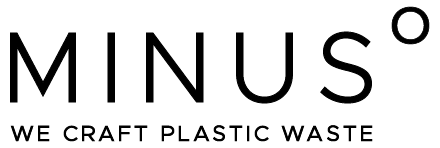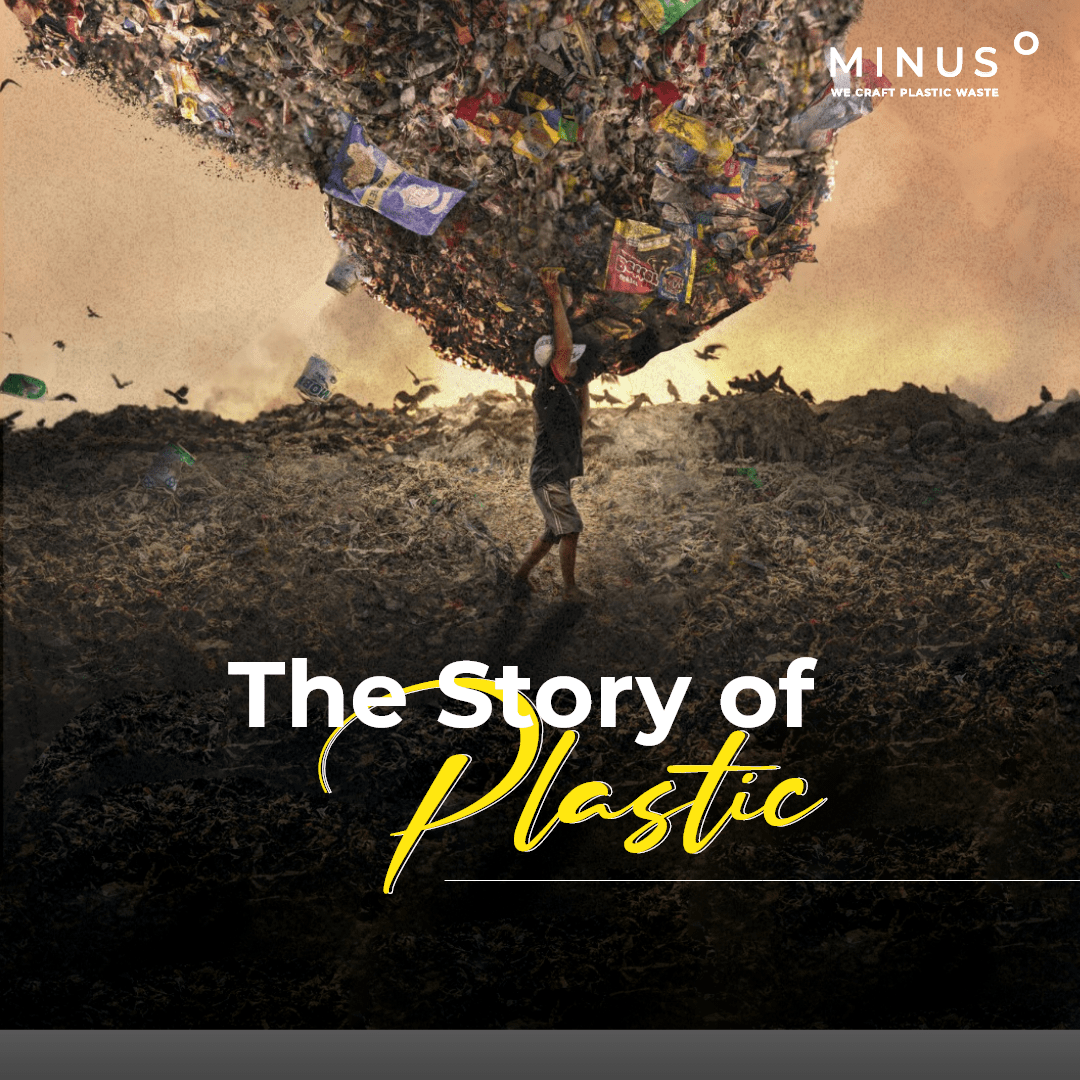The Plastic Story We All Live In
Every day in India, millions of people use plastic bags, bottles, and packaging. The convenience lasts for minutes, but the waste lasts for centuries. Plastic waste doesn’t disappear; it piles up in landfills, garbage mountains, rivers, and oceans, slowly breaking down into toxic microplastics.
India, now the third-largest generator of plastic waste in the world, is at the center of this crisis. But in the middle of this challenge, innovators like Minus Degre are proving that plastic waste is not the end of the story—it’s the beginning of a new one.
This article explores the basics of plastic, its categories, the recycling reality in India, the rise of garbage mountains, and how Minus Degre is pioneering a new path of plastic upcycling and circular solutions.
What is Plastic?
Plastic is a synthetic polymer made mainly from petroleum and natural gas. Its durability, flexibility, and low cost made it one of the most revolutionary materials of the 20th century. Today, plastics are found in:
-
Packaging (bottles, bags, food wraps)
-
Construction (pipes, flooring, panels)
-
Healthcare (syringes, IV bags, medical devices)
-
Electronics (cables, casings)
-
Textiles (polyester, nylon)
Plastic’s strength is also its weakness—it doesn’t biodegrade easily. A plastic bottle can last 450 years, and a plastic bag may take 1,000 years to decompose.
Categories of Plastics: Understanding the Recycling Challenge
Plastics are divided into seven categories, based on their resin codes:
-
PET (Polyethylene Terephthalate) – Used in beverage bottles, food packaging. ✅ Widely recyclable.
-
HDPE (High-Density Polyethylene) – Found in detergent bottles, pipes, milk jugs. ✅ Widely recyclable.
-
PVC (Polyvinyl Chloride) – Used in pipes, flooring, cables, medical products. ⚠️ Difficult to recycle, releases toxins when burned.
-
LDPE (Low-Density Polyethylene) – Grocery bags, cling films, squeeze bottles. ⚠️ Limited recycling options.
-
PP (Polypropylene) – Bottle caps, straws, takeaway containers. ♻️ Recyclable but less collected.
-
PS (Polystyrene) – Thermocol, disposable cups, cutlery. ❌ Hard to recycle, usually landfilled or burned.
-
Other (Mixed Plastics) – Multilayer packaging, electronics. ❌ Most challenging to recycle.
👉 The most difficult plastics to recycle in India are:
-
Multilayer packaging (MLP) (chips packets, chocolate wrappers).
-
Polystyrene foam (thermocol).
-
PVC (toxic and non-recyclable at scale).
These are the plastics that often fuel India’s garbage mountains.
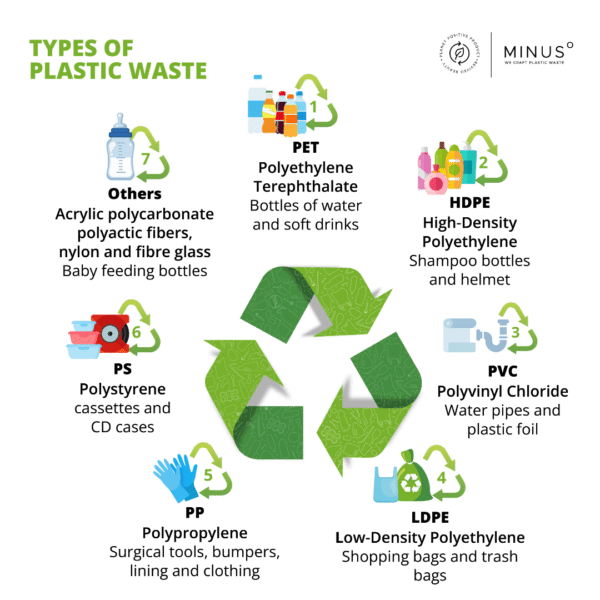
Plastic Waste in India: The Real Picture
-
India generates 3.5 million tonnes of plastic waste every year.
-
That’s about 9,200 tonnes per day.
-
43% of this waste is single-use plastic, mostly packaging.
-
Only 60% is recycled, mostly through the informal sector.
-
Less than 10% is truly upcycled into valuable materials.
India’s waste problem is made worse by poor segregation. Plastics get mixed with food waste, medical waste, and metals, making recycling harder.
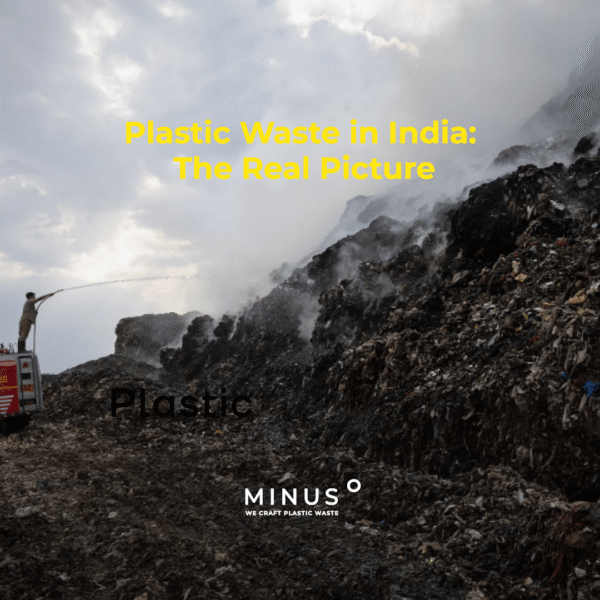
India’s Garbage Mountains: Why They Keep Growing and Burning
In cities like Delhi, Mumbai, and Bengaluru, massive garbage landfills have grown into waste mountains taller than buildings:
-
Ghazipur Landfill (Delhi) – Already taller than the Qutub Minar.
-
Bhalaswa (Delhi) – Expanding rapidly, contaminating groundwater.
-
Okhla (Delhi) – Known for frequent landfill fires.
-
Deonar (Mumbai) – Asia’s oldest and largest dumping ground.
-
Bellahalli (Bengaluru) – Overflowing landfill site with leachate issues.
Why do garbage mountains catch fire?
-
Methane buildup – Organic waste decomposes without oxygen, releasing methane.
-
Plastic fuel – Plastics act as accelerants, making fires uncontrollable.
-
No segregation – Mixed waste increases chemical reactions.
-
Poor landfill management – No gas vents, no scientific capping.
Every time these garbage mountains rage, they release toxic smoke, carbon emissions, and microplastics into the environment, worsening India’s pollution crisis.
Recycling vs Upcycling: What’s the Difference?
-
Recycling: Converts waste into raw material for making new products (e.g., PET bottles → polyester fiber).
-
Upcycling: Creates products of higher value from waste (e.g., plastic waste → stylish furniture or premium eco-panels).
India has a strong informal recycling network, but upcycling is still rare. This is where Minus Degre is unique.
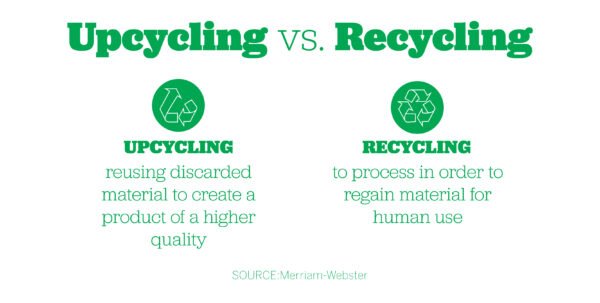
Why Plastic Recycling is Important
-
Reduces landfill burden and prevents new garbage mountains.
-
Protects oceans and rivers from plastic leakage.
-
Cuts greenhouse gas emissions compared to virgin plastic production.
-
Saves resources like petroleum and natural gas.
-
Generates green jobs in the recycling and upcycling sector.
-
Supports circular economy—keeping materials in use, not in waste.
Minus Degre: Leading the Way in Plastic Upcycling in India
1. From Waste to Eco-Panels
Minus Degre manufactures eco-panels—durable sheets made from 100% recycled and recyclable plastic. These panels are used in retail stores, interiors, and furniture as sustainable alternatives to virgin plastic, laminates, and wood.
2. Trusted by Global Brands
Minus Degre’s eco-panels are already being used by Adidas, Aldo, Tata EV, Mango, and Lush for sustainable retail design.
3. Environmental Impact
-
Over 250 tonnes of plastic waste recycled to date.
-
Every sheet replaces the need for virgin plastic or non-sustainable materials.
-
Prevents plastic waste from ending up in landfills, oceans, or garbage mountains.
4. 100% Circular
Unlike many recyclers who mix additives, Minus Degre ensures panels remain fully recyclable at the end of their life—making them part of a closed-loop circular economy.
5. Expanding Beyond India
Starting in Delhi, Minus Degre has now expanded to Australia, competing with global recycling brands and showcasing India’s innovation on the world stage.

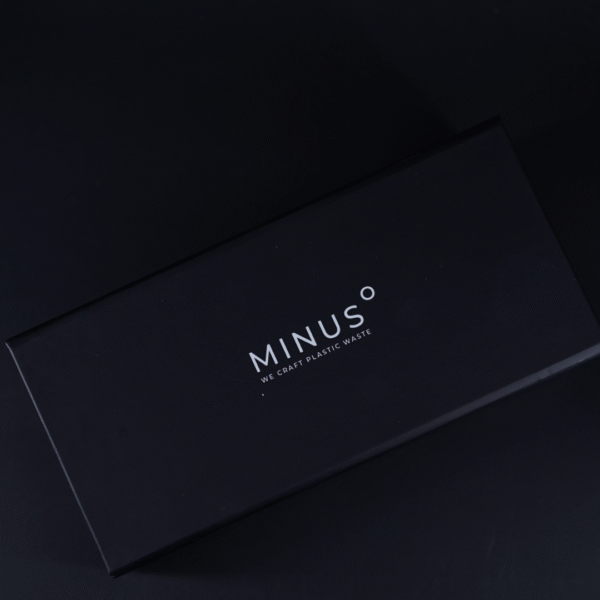
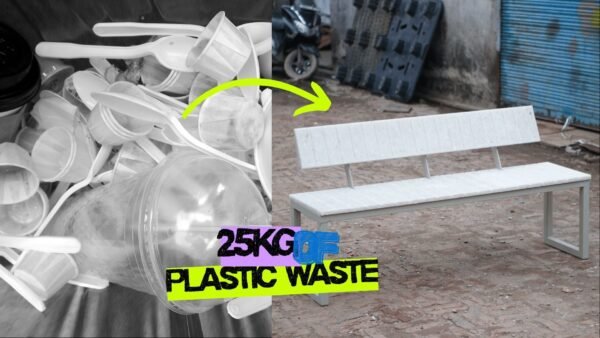
Other Leaders in Plastic Recycling and Waste Management in India
-
Banyan Nation (Hyderabad) – Recycled plastic granules for industries.
-
Lucro Plastecycle (Mumbai) – Focused on flexible plastic recycling.
-
Shakti Plastic Industries (Mumbai) – One of India’s largest recyclers.
-
Dalmia Polypro – PET and HDPE recycling.
NGOs Driving the Change
-
Saahas Zero Waste (Bangalore) – Community waste management.
-
Hasiru Dala (Bangalore) – Empowering waste pickers.
-
Chintan (Delhi) – Policy advocacy for better recycling systems.
-
Plastics for Change (Bangalore) – Linking waste pickers with global brands.
The Future of Plastic Recycling in India
India’s future depends on how we handle waste today. The government’s ban on single-use plastics and Extended Producer Responsibility (EPR) policy are steps in the right direction. But real change needs:
-
Source segregation at homes and businesses.
-
Formal recycling infrastructure to support informal workers.
-
Upcycling innovations like Minus Degre.
-
Brand responsibility—corporates using recycled content in their supply chains.
-
Consumer awareness—choosing sustainable materials and alternatives.

Conclusion: From Garbage Mountains to Circular Solutions
Plastic is not the problem—our use-and-dispose mindset is. Left unmanaged, plastic creates garbage mountains, toxic landfill fires, and ocean pollution. But with recycling and upcycling, plastic waste can be transformed into sustainable solutions.
Minus Degre is showing India and the world that plastic waste can become eco-panels, retail interiors, furniture, and corporate gifts, proving that sustainability and design can go hand-in-hand.
👉 To learn more, explore Minus Degre and see how waste can be turned into wealth.
